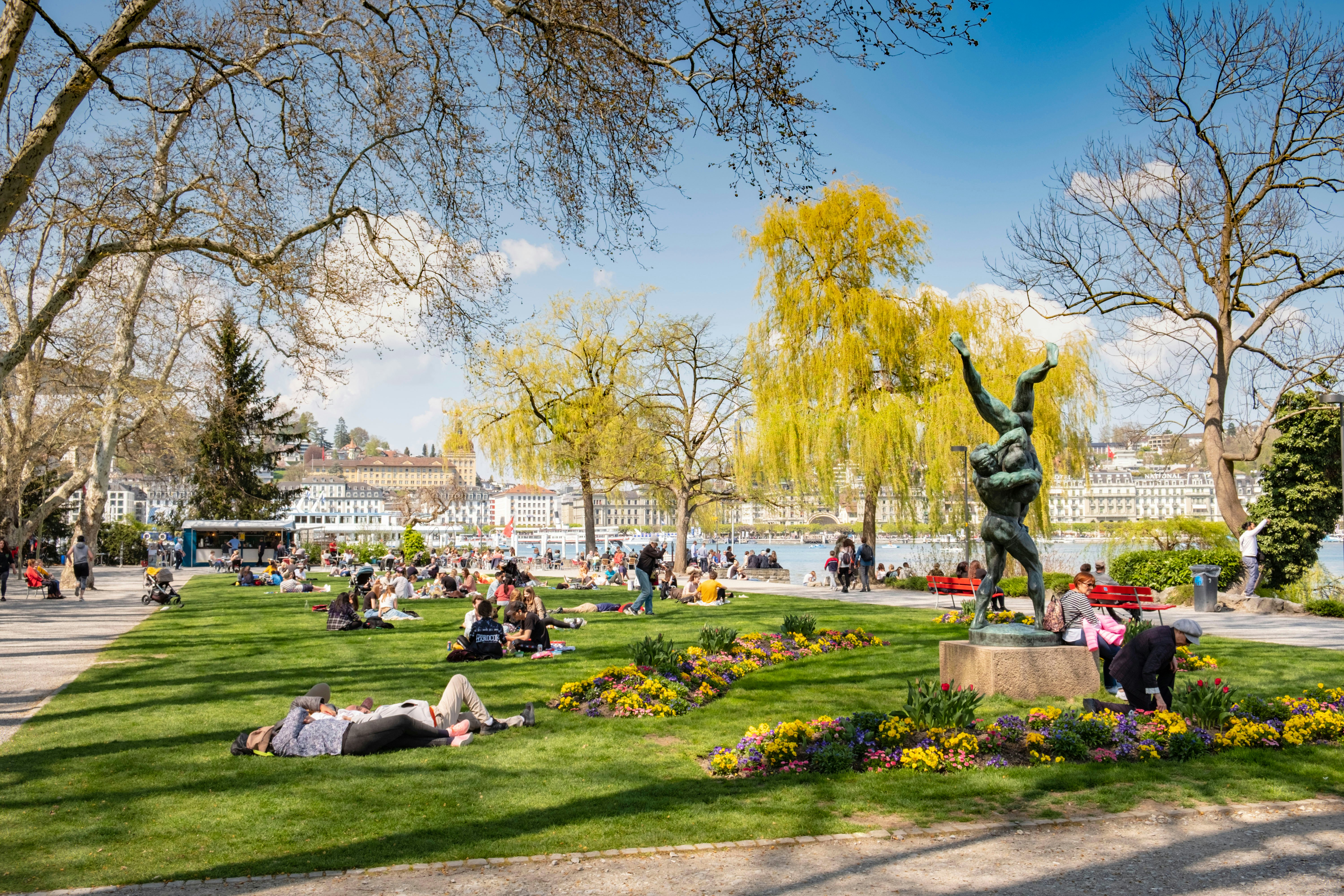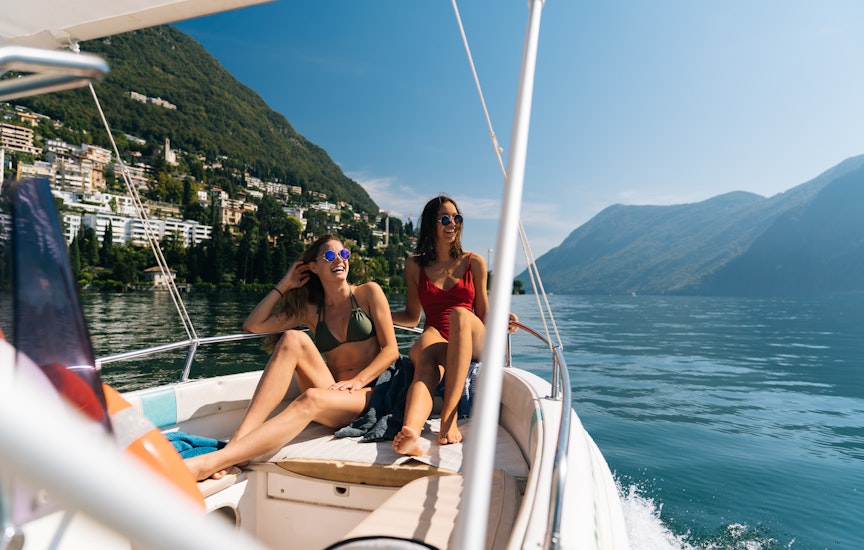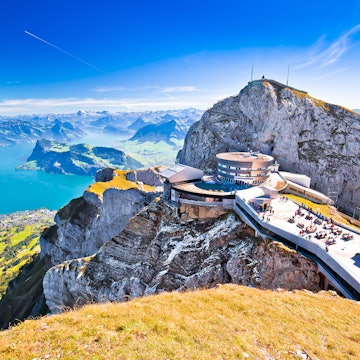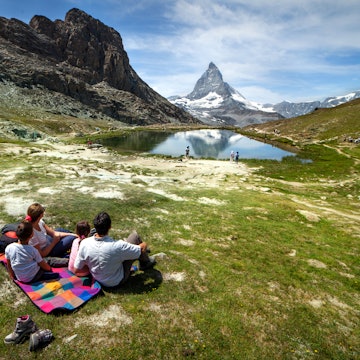

Kapellbrücke in Lucerne, Switzerland. Thomas Mathys/Shutterstock
Most visitors to Central Switzerland base themselves in Lucerne to explore the glorious landscape that surrounds it, but don’t forget to make some time for the city itself.
Not only does it have a gorgeous setting on the shore of the Vierwaldstättersee (Lake Lucerne), but it offers world-class museums, fascinating history, a lively music scene and one of the best preserved medieval old towns in the country.
Make the most of your time in Lucerne by enjoying these top things to do.
1. Walk over Lucerne’s iconic Kapellbrücke
Any tourism image of Lucerne is likely to feature this covered wooden footbridge, which straddles the Reuss River flowing out of the lake. Dating from the early 14th century, the Kapellbrücke is the symbol of the city, but it was almost completely destroyed by fire in 1993, to the heartbreak of the city’s inhabitants. However, the adjacent water tower survived, and a meticulous reconstruction restored the bridge and its painted roof panels to their former glory within just eight months. For the best introduction to the city, make this your first stop after arriving at the nearby train station.
Detour: Downriver is a mini version of the Kapellbrücke, the Spreuerbrücke, the oldest original bridge in Lucerne, dating from 1408. Its wooden roof joists feature painted panels depicting the Dance of Death, inspired by the city’s plague history.

2. Admire the painted buildings of the Altstadt
Lucerne’s gorgeous Altstadt (Old Town) is characterized by its beautifully decorated buildings, whose colorful frescos depict elements of the city’s history and culture, such as the annual Fasnacht (carnival), the legend of William Tell and historic battles. Take a stroll to admire the traditional guild house Pfistern building, the Hotel des Balances and the decorative buildings on Hirschenplatz, Weinmarkt and Mühlenplatz. Linger for longer in one of the many cafes dotted throughout the area.
Planning tip: The Altstadt has numerous water fountains, so bring a refillable bottle and help yourself en route.
3. Stroll along Lucerne’s medieval ramparts
This was once a fortified city, and some of its medieval ramparts remain in the form of the Museggmauer, a stretch of wall and nine towers. You can explore it in either direction. From the Nölliturm in the west of the old town, take the Museggmauerweg up past the Männliturm and on toward the Wachturm, from where you can walk right along the ramparts themselves toward the Schirmerturm. Several of the towers can be climbed, including the Zytturm (clock tower), for a far-reaching view of the city and Pilatus, the mountain that overlooks it.
4. Delve into Picasso’s life and art at the Sammlung Rosengart
The Sammlung Rosengart – or "Lucerne’s Picasso museum" as some locals call it – is the private art collection of Swiss art dealers Siegfried Rosengart and his daughter Angela. The pair were friends with Picasso, and a whole floor is dedicated to his work, with around 40 examples of his imaginative, playful mind.
The basement displays numerous paintings and sketches by Swiss-born artist Paul Klee, while upstairs features classic modernist work by Cézanne, Monet, Matisse, Braque, Miró, Chagall and more. Don’t miss the photographs of Picasso and his second wife Jacqueline, taken at the couple’s home near Cannes in the 1960s by the American war photographer David Douglas Duncan, which give a glimpse into their life together.
Planning tip: If you’re considering visiting several of Lucerne’s museums, it may be better value to buy a Museum Card, which gives access to nine museums over two consecutive days.

5. Catch the funicular up to Château Gütsch for a drink with a view
Look downriver and you’ll see a fairy-tale castle perched on a hill above the city. This Rapunzel-esque hotel, Château Gütsch, dates from 1901, although there was an inn up here half a century earlier. It’s easily reached thanks to a funicular that rises up the hill from town and deposits you right next to the hotel. Check out the view from the top or linger with a drink on the hotel’s terrace, with the city and lake puddling far below.
Planning tip: Essentially an elevator, the funicular is just a five-minute walk from the southern end of the Spreuerbrücke and runs on demand from early morning to late night. Press the button to call it down.

6. Enjoy live classical music at the KKL
Right on the lakeshore next to the train station, with a huge black flat roof, the Kultur und Kongresszentrum Luzern (KKL) is hard to miss. Designed by French architect Jean Nouvel, this vast postmodern arts center and concert venue has world-class acoustics and facilities that attract the biggest names in classical music. The annual Lucerne Festival is a major date on the orchestral calendar, while a number of other festivals, including Luzern Live and Piano Fest, are worth looking out for throughout the year.
Planning tip: The KKL’s cafe, Le Piaf, is great for lunch or a coffee, or you could buy a takeaway drink and head for the fountain and surrounding boardwalks outside, a popular meeting spot on a sunny day.
7. Have a quiet moment with the Lion Monument
It’s worth making the short walk from the Altstadt to the Löwendenkmal, a large stone relief carving of a dying lion, fashioned out of the rock in a former quarry in the north of the city. It’s a poignant memorial to the Swiss Guards who died protecting King Louis XVI of France from revolutionaries in 1792. Danish artist Bertel Thorvaldsen’s design is achingly sad, but what should be a tranquil, reflective space is somewhat spoiled by selfie-touting tour groups, so come early or late to see the lion in peace.

8. Enjoy a drink on the lakeshore at Inseli Park
The place to be on a warm early evening is Inseli Park, a strip of grass on the lakeshore near the KKL. Two little cafe-bars at either end of the park – Buvette and Volière – serve cocktails, beers, wine and soft drinks plus some light bites (although not over winter). Pull up a chair or swing your legs over the lake wall and enjoy the buzz and the lovely views. If you’re saving centimes, grab a picnic and drinks from Coop supermarket or Bachmann bakery (both in the nearby train station) and sit on the grass.
9. Take a ride through the history of transport at the Verkehrshaus
Switzerland is rightly proud of its fantastic transport system, and nowhere does this pride show more than at the Verkehrshaus der Schweiz (Swiss Museum of Transport). Paying homage to every method of transport you can think of, this is a hugely hands-on museum, with cockpits to sit in, simulators to test out, digital and physical games to play and all sorts of trains, planes and automobiles to check out. Ideal for kids, big kids and transport nerds.
Detour: The museum is a short walk from the lakeside next to the Verkehrshaus ferry stop. Make time for a swim, or walk five minutes along the lake to the Sunset Bar which, as the name suggests, is a great place for a drink as the sun goes down (from spring until autumn).
10. Swim and barbecue at the Ufschötti
On a sunny summer afternoon, follow the stream of locals to Ufschötti on Alpenquai, a 10-minute walk from the KKL. This park with a sandy beach on the lakeshore is a lovely place to while away an afternoon sunbathing, swimming and barbecuing. There’s a cafe-bar for drinks and a pétanque pitch if you fancy a game or two.
11. See where Wagner lived and composed the Siegfried Idyll
It’s no surprise that Lucerne’s beautiful lakeside location has inspired numerous artists and musicians over the years. German composer Richard Wagner was so taken with the city that he rented a villa on the lakeshore at Tribschen for several years from 1866. Today it’s a museum exploring the composer’s time here, his famous works and his romantic entanglements. His chamber piece Siegfried Idyll was written for his second wife on the birth of their son Siegfried and first performed on the villa’s staircase.
Planning tip: Rather than walking, take the ferry from Bahnhofquai to Tribschen, a five-minute journey. The museum is a two-minute walk from the jetty.
12. Go underground in Lucerne’s Cold War bunker
If you fancy something a little different, head for the Sonnenberg hill, where in 1976 Lucerne created a nuclear fallout shelter designed to protect a third of the city’s population. Why? Because at the height of the Cold War, neutral Switzerland was a little nervous about its geographical location at the heart of Europe and ruled that every citizen should have a place to hole up if needed. Lucerne’s authorities decided that two motorway tunnels under the Sonnenberg hill could work as a temporary shelter, so they built a command center there that could run operations for up to 20,000 people if deployed. Book ahead for a fascinating tour of the Sonnenberg Civil Protection Facility and see where and how people would have slept, eaten and used the toilet in post-apocalyptic Lucerne.
Planning tip: Reserve in advance to join a public tour in English, held on the last Sunday of the month from April to August, or book your own private tour.
















